Estimated reading time 19 minutes, 50 seconds.
At 73, Vera’s retirement is hopefully a long way off.
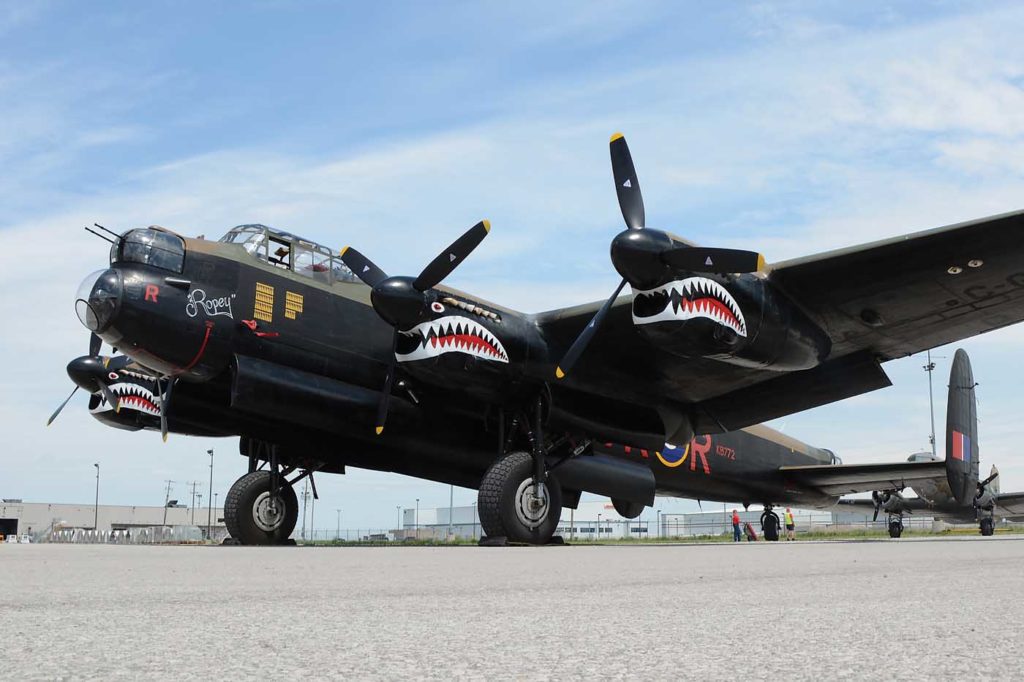
For now–and as long as it’s financially and physically possible–she’s still a working girl.
“Vera,” of course, is the affectionate nickname for the Canadian Warplane Heritage Museum’s (CWHM’s) Avro Lancaster Mk. X, registration C-GVRA.
A total of 7,377 of the heavy bombers were built in Britain and Canada during the Second World War.
With its impressive manoeuvrability and payload, the Lancaster is remembered for its role in the bombing of the Ruhr Dams in 1943, and the sinking of the German battleship Tirpitz, as well as for successfully deploying the “Grand Slam” bomb on U-boat facilities. It was without doubt the most successful Allied heavy bomber of the war.
Vera is the last remaining airworthy Canadian-built Lancaster, rolling off the Victory Aircraft assembly line in Malton, Ont., as RCAF FM213, in April 1945. Canada built 430 of the bombers to support the war effort, turning out one aircraft per day at peak production.
Now, Vera is one of only two airworthy Lancasters in the world. [The other is PA474, a British-built Lancaster operated by the Battle of Britain Memorial Flight (BBMF) at RAF Coningsby in Lincolnshire, England.]
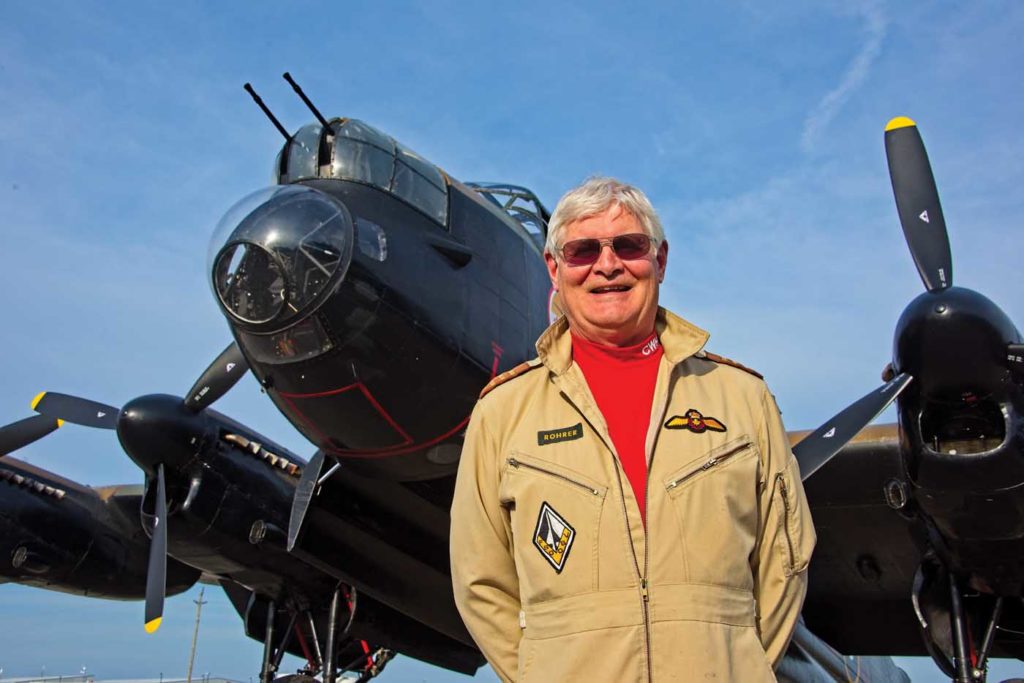
The Canadian “Lanc” resides at the CWHM, located at the John C. Munro Hamilton International Airport in Mount Hope, Ont. She is dedicated to the memory of P/O Andrew Mynarski, a Canadian recipient of the Victoria Cross, and is in fact formally named the “Mynarski Memorial Lancaster.”
But, far from a leisurely life on display, Vera must stay busy to earn her keep.
Without any regular government or corporate support, the museum’s staff has resorted to some creative fundraising efforts that–when taken together–have always managed to fund the facility’s $5.5 million annual operating budget and support its collection of 45 historically significant aircraft.
“It’s up to us to create those revenues,” said Dave Rohrer, president and CEO of the museum. “We are Canada’s flying museum, and I say that in the sense that we’re the largest flying museum in Canada, but there are a lot of other things we do to make that possible.”
On any given weekday, as many as 150 schoolchildren attend special classes at the hangar, and others sleep under the wings of the Lancaster with their Cadet, Girl Guide or Boy Scout troops. The CWHM operates a successful café with a Red Seal chef, along with a catering business that handles as many as 40 onsite wedding receptions and other corporate events every year.
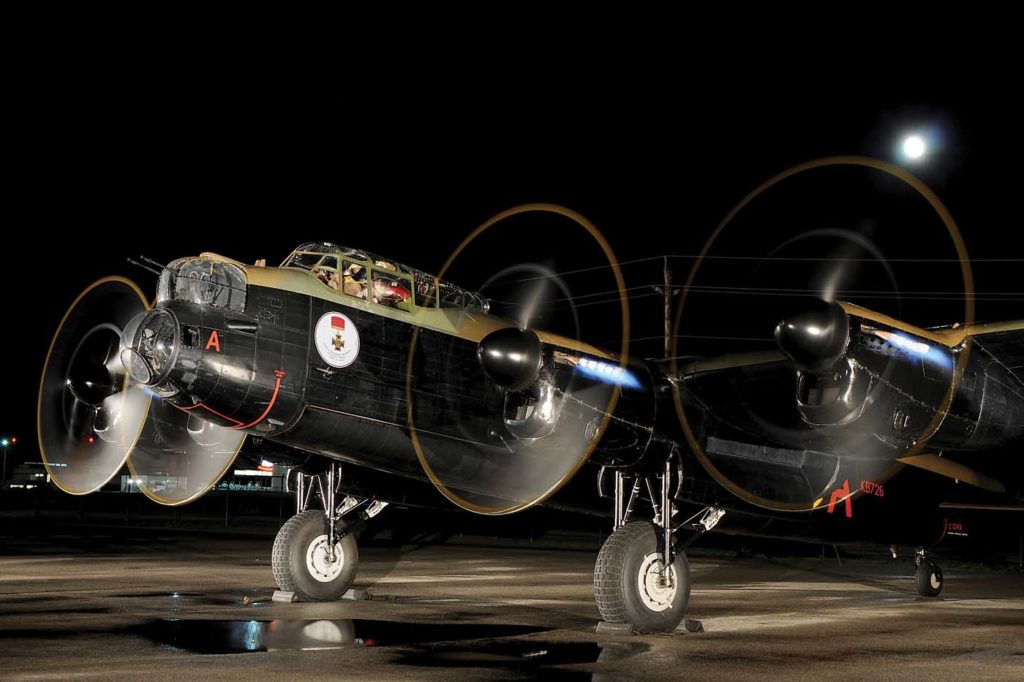
Other funds are raised through ticketed guest speakers (one recent event was a talk by author Ted Barris, who wrote the soon-to-be-released book Dam Busters about Canadian airmen and their role in that famous wartime mission), as well as special industry functions such as the 2017 Air Commodore Birchall Leadership Award dinner held in honour of former astronaut Chris Hadfield.
The museum also hosts other events such as an annual Flyfest on Father’s Day weekend, Vintage Wheels & Wings shows, themed dances, and its renowned Remembrance Day ceremony.
For the second year in a row, the CWHM is also partnering with the Rotary Club of Brantford to host the free Community Charity Airshow in Brantford, Ont. This year, the Lancaster will fly with another rare bird, the B-29 Superfortress known as “Fifi,” which will make its only Canadian airshow appearance in Brantford on Aug. 29, 2018.
The CWHM crew is very busy, indeed.
And, just like Vera herself–who logs about 50 hours in the air each year–retirement is the last thing on the minds of the select group of pilots and maintainers who keep the much-loved heavy bomber in the air.
VERA AT WORK
In wartime, the Lancaster carried a crew of seven: the pilot, flight engineer, navigator, wireless operator, bomb aimer/front gunner, mid-upper gunner and rear gunner.
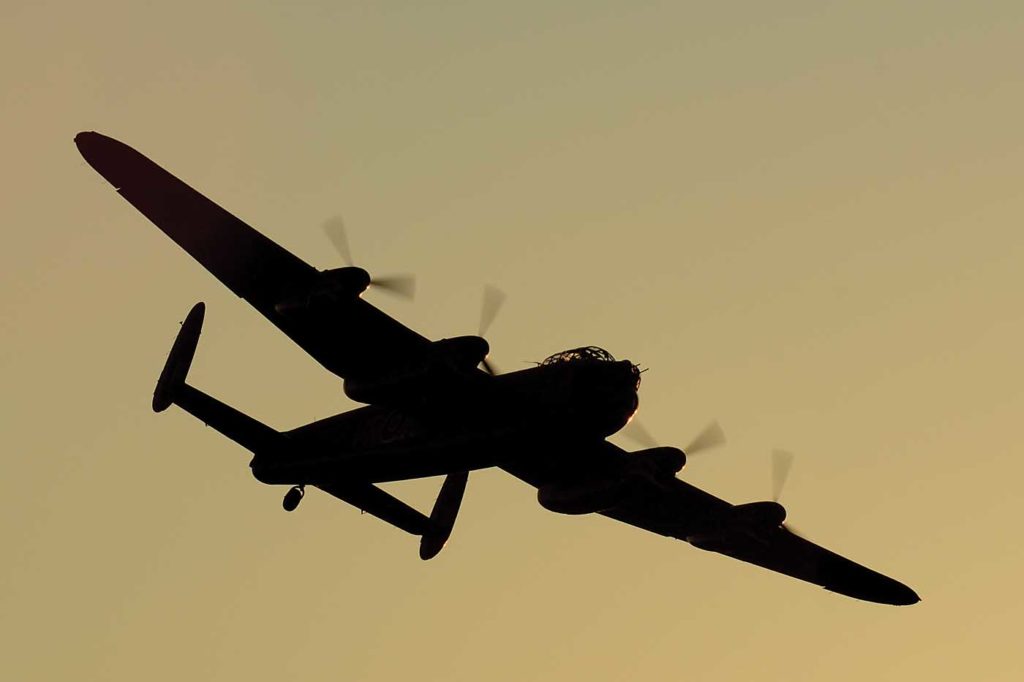
Nowadays, when Vera takes to the skies, she’s usually flying with a crew of four, which includes two pilots, a crew chief, and a fourth crew member who looks after the passengers.
Although time has stood still for England’s BBMF Lancaster, its Canadian cousin has been stripped and reconfigured to include four passenger seats on the port side.
“Their airplane is equipped just like it was in World War II,” explained the museum’s chief pilot, Leon Evans. “The turrets are hanging there, radio panels and transmitters, the navigating table, even a flare-mounted gun in the fuselage. Ours has been stripped–but this airplane has to earn money, and the Queen is very generous to the BBMF. This one is a working girl.”
The British Lanc isn’t available for public flights, making the Hamilton museum the only place in the world where enthusiasts can actually fly in a Lancaster.
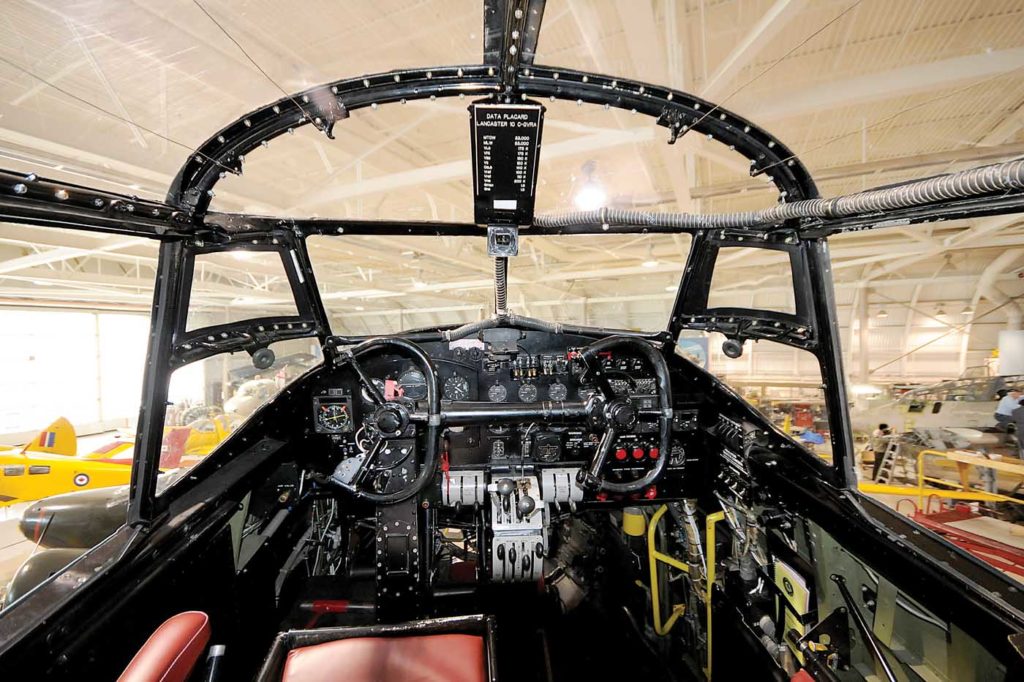
At a cost of $3,500 for one hour, plus the cost of a $125 museum membership, Lanc lovers everywhere can hear the roar of four Merlin engines and experience the thrill of flying in the legendary heavy bomber.
About half of the museum’s rides are sold to passengers from the U.K., Australia and New Zealand. About one third of riders are from the U.K. alone, following the Canadian Lancaster’s successful 2014 English tour.
Local flights are generally sold to people who live within a couple hours’ drive of Hamilton, although many come from the vicinity of Nanton, Alta., home to the Bomber Command Museum of Canada.
AN EXCLUSIVE CLUB
If Vera is travelling away from her home base in Hamilton, her entourage will generally include a crew of eight, with two pilots, two crew chiefs and four maintenance personnel.
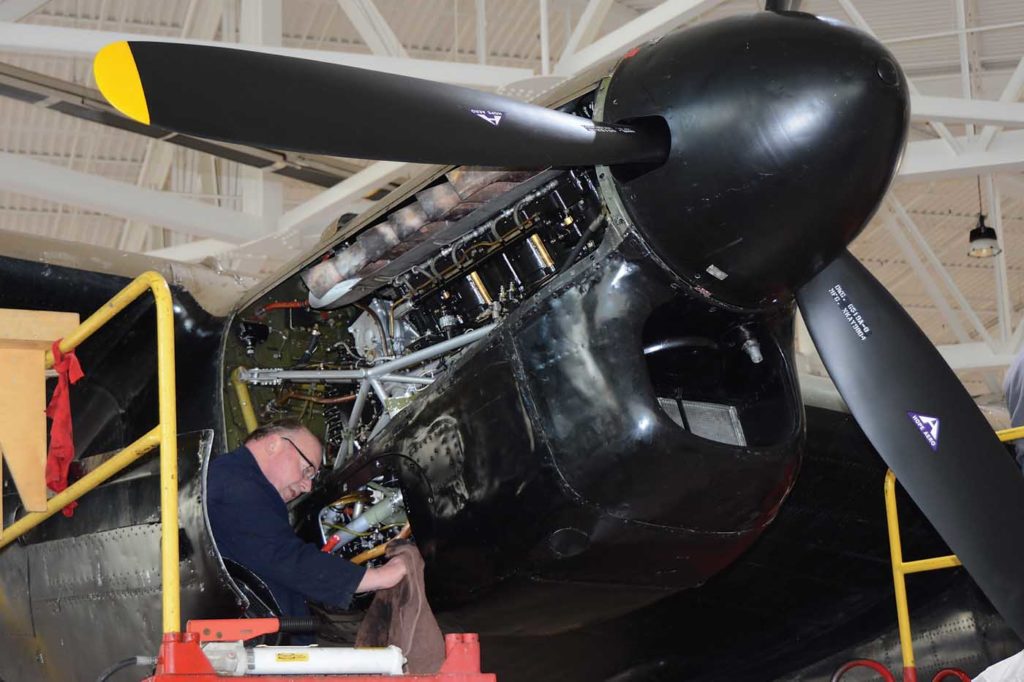
In total, six CWHM pilots are qualified to fly the Lancaster: Dave Rohrer, Leon Evans, Andy Dobson, Sten Palbom, Bill Craig and John McClenaghan.
Together with three of their colleagues at the BBMF in England, they form a very exclusive club.
As one of only nine pilots in the world qualified to fly the Lancaster, Rohrer, 67, put it like this: “When I checked out on the airplane, my wife asked me, ‘What do you think? How does it feel?’ I told her I thought we had joined a more exclusive club than the [space] shuttle pilots!”
Both Rohrer and Evans have been flying the rare bomber for almost a decade. Like all CWHM pilots, they started from the bottom, first flying the museum’s North America Harvard Mk. IV and eventually working their way up the taildragger ladder to the twin-engine Beech 18, the Douglas C-47 Dakota, and then finally the Lancaster.
When it comes to succession planning, museum management is extremely selective about who will join the exclusive Lancaster pilots’ club. The job is about much more than simply flying the plane.
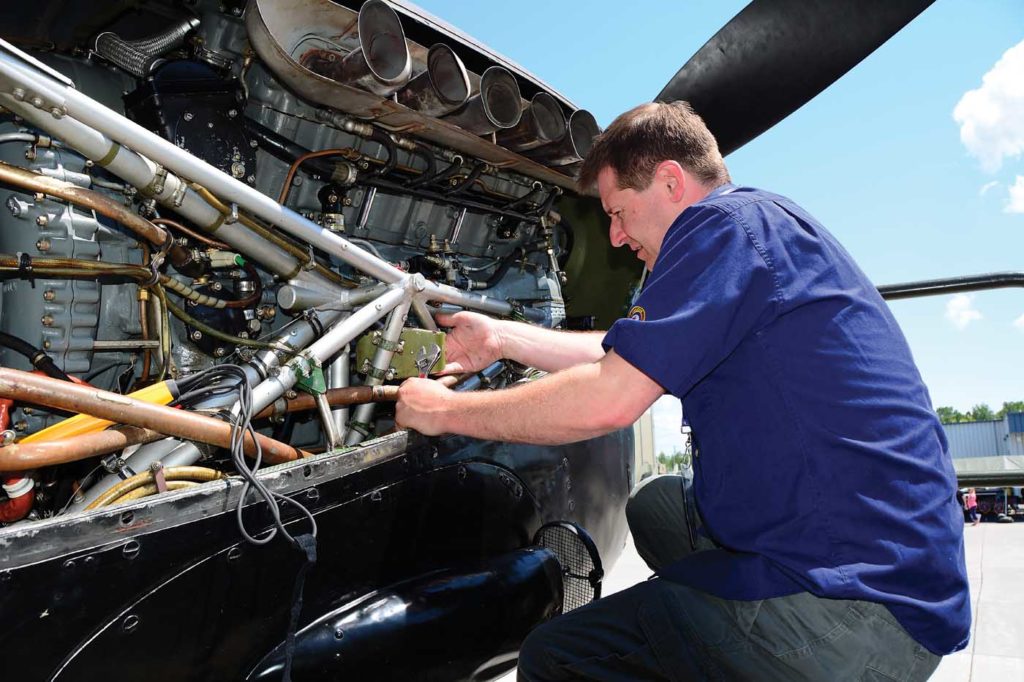
“We look at the younger pilots and if it’s someone who will eventually be on the Lancaster, we identify that fairly early,” explained Rohrer.
“It takes more than good hands and feet to be a pilot at the museum. You have to have a sense of purpose, a sense of stewardship, a sense of engaging the public and making sure it’s an enjoyable experience for them. At the end of the day, we’re in the entertainment business–we educate and entertain, and we make history fly.”
Some of the museum’s pilots have been flying Vera for close to 30 years, and each one cherishes the special opportunity they’ve been given.
“We don’t take it lightly,” said Rohrer. “We think about what we’re doing, and the privilege and the honour and responsibility. That word ‘stewardship’ is a big thing. It’s almost like a life’s goal we’ve prepared for all our lives, almost unknowingly.”
Rohrer, who joined the Royal Canadian Air Force (RCAF) out of high school, served actively on a number of different aircraft and tactical helicopters until 1986, and then on reserve until 1993. After a stint at the Canadian Aviation Safety Board (precursor to the Transportation Safety Board of Canada) as the Ontario regional manager, he moved to Transport Canada, where he became regional director of aircraft services for Ontario region. When he retired in 2005, he moved from volunteering at the museum into the president and CEO’s office. In addition to actively flying several of the museum’s aircraft, he logs thousands of hours a year flying what he calls the “mahogany bomber”-a.k.a. his desk.
Chief pilot Leon Evans, 72, first became interested in warbirds while flying Harvards in Tillsonburg, Ont. He started volunteering at CWHM in 2000 and hasn’t looked back since.
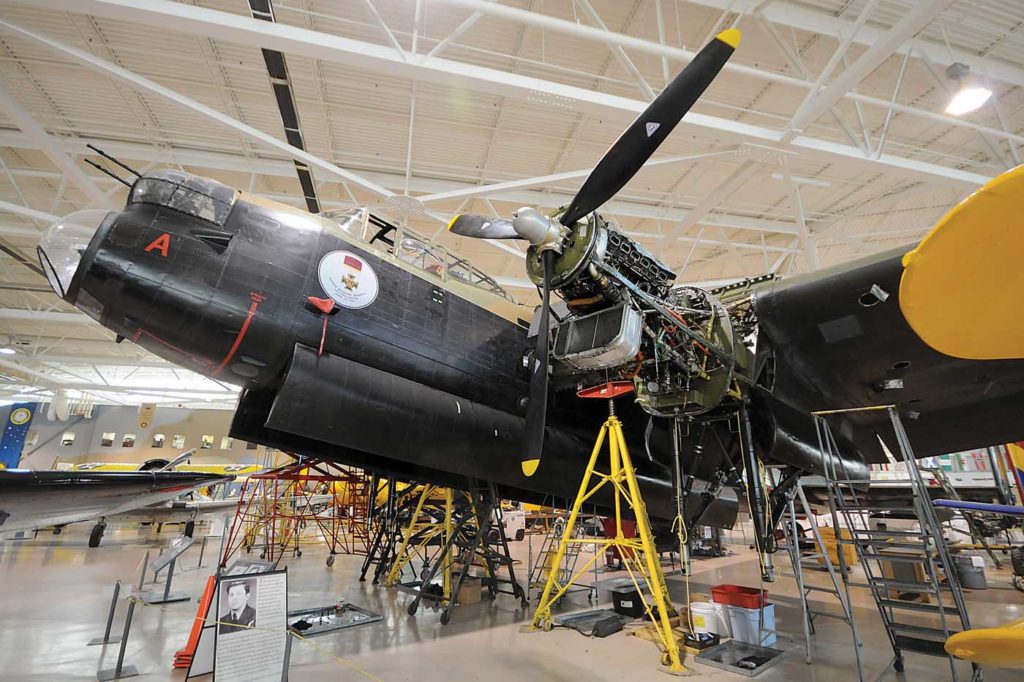
A senior captain and training pilot with Air Canada for almost 34 years, Evans has accumulated more than 22,000 hours flying aircraft as modern as the Airbus A340 and as old as the Fleet Model 21.
“We didn’t expect we’d be where we are today, flying these airplanes now,” Evans told Skies. “Dave and I flew the C-47 yesterday, the D-Day bird. These are all airplanes the Canadian Armed Forces have flown, and many are dedicated to those who served. I’m so lucky to be here.”
As the dedicated training pilot for the Lancaster, Evans oversees initial and recurrent training for all pilots on the bomber.
Newcomers to the airframe must complete an initial 16-hour groundschool at CWHM, followed by a minimum of five hours of flight training.
Once qualified, an annual one-hour recurrent training flight is required as well as a competency check every second year.
Pilots will often log countless hours just sitting in the cockpit, reviewing procedures and scenarios with a check pilot.
So, just how does the Lancaster perform?
“It’s a heavy airplane,” said Evans. “It has a little bit of assistance with the servo tabs that help take some of the weight off the elevators and ailerons. But at the end of a couple of days, your upper legs feel like you’ve been doing squats with a barbell! You really have to kick in the rudder. If you turn the yoke and just use your aileron, you’re not going anywhere.”
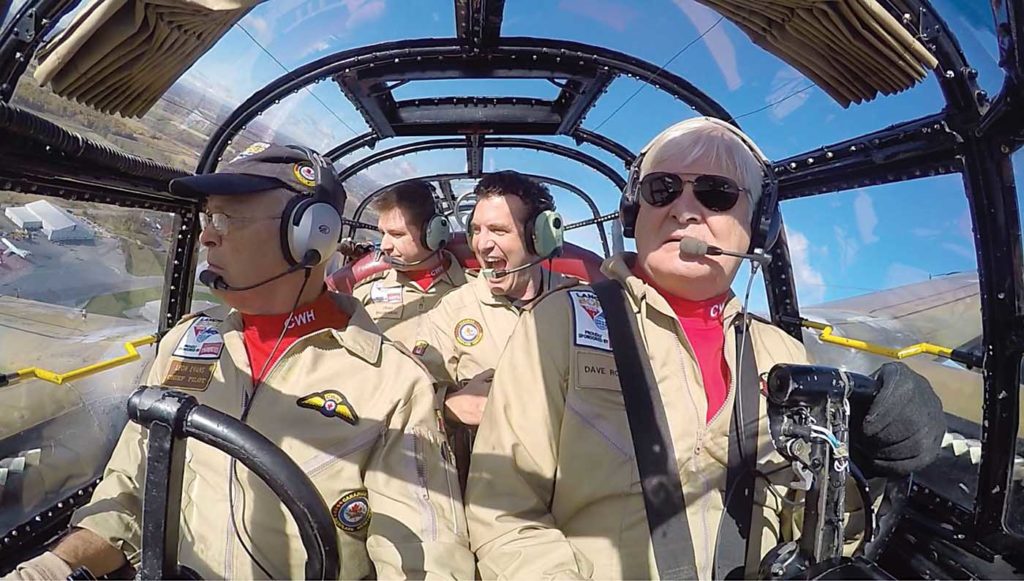
But he added that the bomber is surprisingly responsive, especially in landing configuration, without any nasty habits in the stall.
Rohrer agreed, adding: “When I went to the Lanc, I was a bit apprehensive about how it would handle. There are stories about it in crosswinds, but I was amazed because it was more manoeuvrable than I thought it would be.
“The thing I’ll never forget is the first time I put the power up for takeoff and those four Merlins came to life. The sound is unbelievable.”
The Lancaster performs best on a grass strip, landing into the wind. Crosswinds from the left do present a challenge, but as Evans put it, “We can manhandle it.”
Regardless, both pilots realize their preparedness is a luxury that didn’t exist in wartime.
“When you think about the experience and the challenge those boys had, there’s no comparison,” said Rohrer.
The CWHM doesn’t fly the aircraft at typical wartime loads of up to 67,000 pounds. A typical flight will see the Lancaster take off between 42,000 and 46,000 pounds, enabling it to easily cruise along at 170 knots, its four big Packard Merlin V-12 piston engines burning a whopping 1,000 litres of avgas per hour.
[Fuel is one of the museum’s biggest expenses. In 2017, it spent $225,000 on avgas.]
When they’re flying the Lancaster, the fact that it’s one of two airworthy examples in the world is always top of mind for the CWHM crew. Everyone must be on their A game, dedicated to safeguarding the priceless aircraft.
“We’re here at the right time in the right place, with the right skills and background,” said Rohrer. “We can identify the risks and we know when not to take a risk. We know aviation is dynamic and things can happen, but we know this airplane intimately and we know ourselves.”
He said practising effective crew resource management is critical at the museum–any crew member knows they must speak up with any concern, no matter how small.
“And we have an AMO [aircraft maintenance organization] that does tremendous work, so we have a lot of confidence in the airplane and its maintenance.”
KEEPING VERA IN THE AIR
Flying season at CWHM runs from May 1 to Nov. 11 for most airplanes.
Following Remembrance Day, the museum begins its winter maintenance program. While Evans’ team reviews manuals and checklists to make any necessary revisions, chief engineer Jim Van Dyk musters the troops for a long season of inspections.
With just five staff–including an office clerk, two licensed aircraft maintenance engineers (AMEs), and two apprentices–Van Dyk relies heavily on 60 to 80 volunteers who come in at least once a week.
Overall, the museum as a whole realizes about 65,000 volunteer hours a year.

“Everybody comes from a different background and we try to fill in the gaps,” the chief engineer told Skies, adding that it’s a daunting task for anyone to learn all the systems on the museum’s 18 airworthy aircraft.
“To find engineers experienced on a Lancaster is extremely rare, so typically we’ve managed to take people who were volunteers and then worked them through. Other times, we’ve taken AMEs and trained them on type. Typically, it involves a lot of hands-on work.”
Van Dyk figures the Lancaster’s 50 hours of annual flying easily translate into 1,000 man hours of regular maintenance, not including important tasks that come up during flying season.
That doesn’t include the hours spent searching “the Lancaster network” for scarce parts.
Recently, CWHM had a major windfall when Van Dyk located some brand new Lancaster propeller blades in a Florida warehouse, mislabelled as Corsair props.
Along the same lines, the aircraft on display at 14 Wing Greenwood, N.S., proved to be the bearer of recently overhauled props.
“We did a swap with some similar propeller blades from another airplane that I managed to scrounge,” said Van Dyk. “We put the unserviceable blades on the display plane and we got all 12 blades in exchange.”
It’s not cheap to keep Vera in the air. A Merlin engine overhaul costs approximately US$150,000, and the museum has done five of them in the last 10 years.
A propeller can be serviced for about $15,000, with one going in for overhaul about every two years, based on a 50-hour flying season.
As for tires, Dunlop still has the Lancaster moulds and recently produced a special batch that was shared by CWHM and the BBMF in England.
“We can keep ancillary costs down quite low, partly because we keep a lot of spares on hand,” added Van Dyk. “Many times, we can use our machine shop to reproduce simple parts. Also, parts are sometimes interchangeable between airplanes.”
The rest of the time, the museum works its contacts to scrounge, trade and share parts for not just the Lancaster, but the rest of its flying fleet.
A LANC’S LIFESPAN
No one knows how long the museum will be able to keep Vera in the air, because the life expectancy of a Lancaster airframe was never determined.
In the end, it will come down to how much structural fatigue the metal can safely endure.
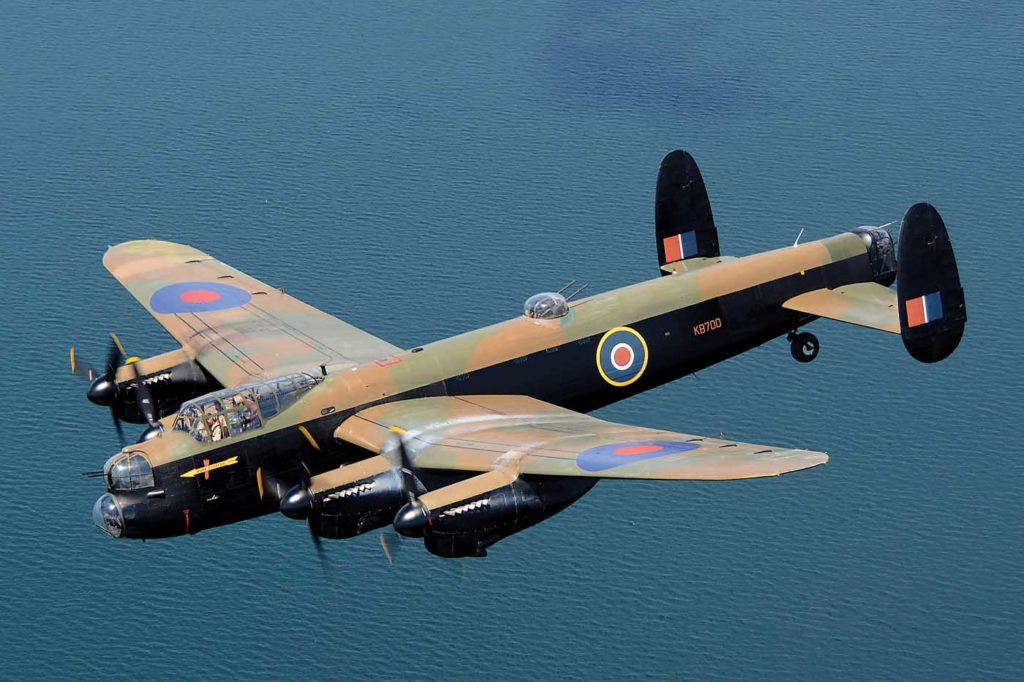
“That’s why when we go into maintenance on Nov. 12, we do a lot more maintenance than we have to, and we go through the airplane every year with non-destructive testing (NDT) specialists,” said Rohrer.
It helps that Vera is an unpressurized vessel and that she saw no combat service in the war due to her production date. Van Dyk surmised she carried survival equipment rather than bombs in her post-war maritime reconnaissance role, where she served with the RCAF on Canada’s East Coast and retired from duty in 1963.
The aircraft was then displayed outside the Royal Canadian Legion in Goderich, Ont., before it was acquired by CWHM in 1977 and painstakingly restored to airworthy condition. It officially took to the air again on Sept. 24, 1988. Since then, Rohrer estimates the museum has put about 1,800 hours on the airframe.
Today, Van Dyk and his crew keep a close eye on Vera’s health.
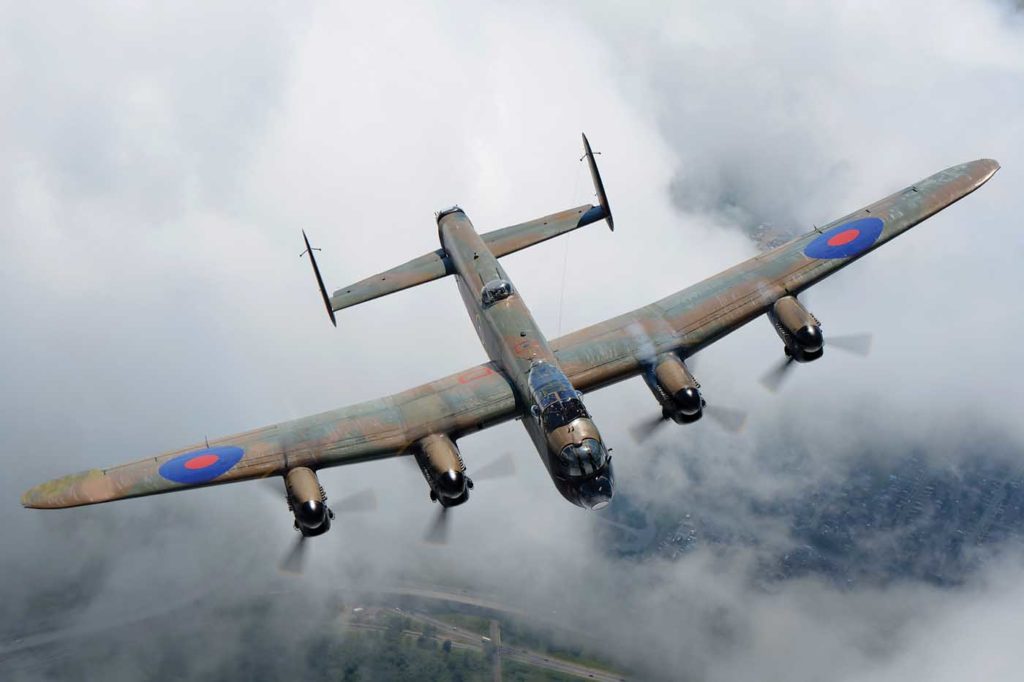
“It’s very hard to say when small cracks will appear,” he said. “If we had any sign of things cracking or shifting, or hardware coming loose, we would have to make a decision at that time.
“I would hope we have several years left. I don’t think 10 is a bad guess, going the way we are. But it is very hard to say when a 73-year-old airplane is going to give out. We’re very happy they were so well built in the first place.”
Rohrer said that even after the Lancaster is grounded, it will likely still continue to operate, not unlike “Just Jane,” Avro Lancaster NX611, which is based at the Lincolnshire Aviation Heritage Centre at historic RAF East Kirkby airfield in England.
Jane’s engines are run periodically and taxi rides are sold. Proceeds help support the centre, which is dedicated to educating visitors about the sacrifices made by Bomber Command.
“Somewhere down the road, we’ll be
in that situation,” admitted Rohrer. “That’s another reason we limit the
flying hours every year, to stretch out
the airplane’s life.
“When is that day? It’s really hard to say. I certainly hope it’s not on my watch. I don’t think it will be. But, I can’t imagine a 100-year-old Lanc flying, either.”
HONOUR AND PRIVILEGE
That concept of stewardship Rohrer mentioned is shared by everyone in the museum. From its 25 mostly volunteer pilots to its 23 full-time staff, everyone considers themselves privileged to work with a collection of rare aircraft that embodies Canada’s flying heritage.
There’s no doubt the Lancaster is the centrepiece of that collection.

raid. Wing Commander Guy Gibson’s aircraft, AJ-G, had two Canadians on board
when he led the daring mission in May 1943. Mike Reyno Photo
“It’s a tremendous opportunity and I think I’ve done everything I can to help the museum continue with this airplane for a very long time,” said Van Dyk. “I do realize it’s the opportunity of a lifetime that I’ve been given.”
From the pilot side, Rohrer and Evans say that although many aviators volunteer to fly the Lanc, it’s worth waiting for the right person.
“We’re looking for someone with a servant’s heart,” concluded Rohrer.
“When we find them, it’s a special person.”
He pointed out that of the 120,000 or so who joined Bomber Command, 55,573 did not survive their tour. Of those, 10,659 were young Canadians in the prime of their lives–an unbelievable sacrifice for a country populated by only 11 million people at the time.
“When we fly, we fly to represent that history and that sacrifice, that service, and to keep that memory alive … that’s why it’s an honour.”
Skies is partnering with Canadian Warplane Heritage Museum to bring Vera to the Canadian Business Aviation Association’s 2018 Convention and Exhibition at Region of Waterloo International Airport this week. Watch for it on Thursday, weather permitting.
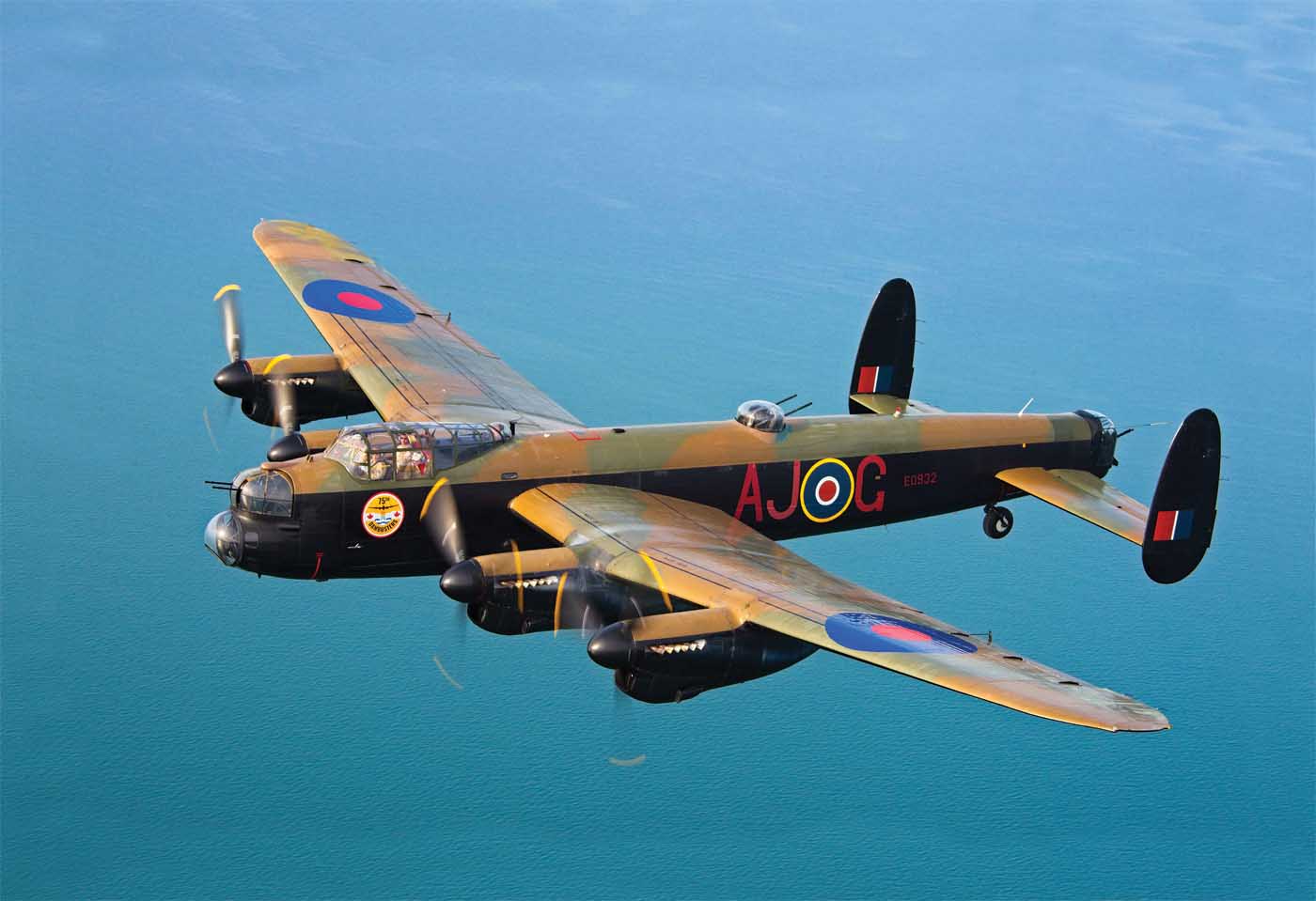

Dave, Ken Goodrich Pres. Citation Store Corp.
Great review, glad to see your still pushing the throttles,your passion really shows, hope your wife doing well also.
Great memory of the time together with Les, that introduced me to you.
I wish you all the best, hope we get a chance to spend time together again soon. Ken.
What a wonderful article, totally enjoyed reading it. I had the pleasure of seeing the Lancaster now in Auckland’s MOTAT fly into Auckland from New Caledonia when it buzzed a French Navy Frigate in Auckland harbour, very low and at full noise, several times.
My compliments to Lisa Gordon. I found this article to be interesting and well-written. I think the quality of this article surpasses most of the stories on this website. Good on you.
Dan Ebenhoech
Ottawa, ON